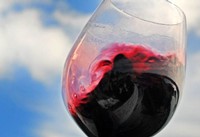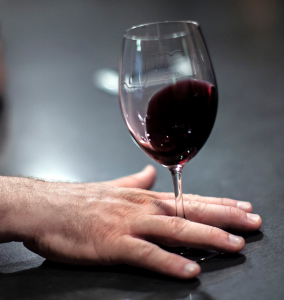The 5 Things You Need To Know About Swirling Wine

Your friend pops open a magnificent bottle of 94 point 2013 YAO MING Napa Valley Cabernet Sauvignon, pours herself a glass, and starts swirling it around. She's not tasting it. She's not even looking at it yet. Just swirling it around and around her glass. Is this the ultimate in pretense or does she know something you don't?
The truth is, she may know 5 things you should know about swirling wine...
1. Wine is primarily "tasted" with the nose. Believe it or not, the complexity of a wine's taste is created through our nose and not our mouth. Our taste buds can distinguish sour, bitter, salty, sweet and savory. The wide array of fruit, earthy, floral, herbal, mineral and woodsy flavors present in wine are derived from aroma notes sensed by the olfactory bulb. When a wine is swirled, literally hundreds of different aromas are released, the subtlety of which can only be detected with the nose. By swirling, a wine's aromas attach themselves to oxygen (and are thus less masked by alcohol) and are easier to smell. If you want to test the power of the nose, try plugging your nostrils and tasting the wine at the same time.
2. Swirling actually eliminates foul-smelling compounds. Oxygen at work again! Swirling the wine in the glass enables some evaporation to take place, which means more of the volatile compounds will dissipate. Some of these compounds include sulfides (matchsticks) and sulfites, (rotten eggs).
3. Swirling in a wide glass is more effective than a narrow glass. Have you seen those huge Reidel glasses that look like they could hold half a bottle of wine, and wondered what was the point of an enormous wine glass like that? More space in the wine glass means the wine gets more surface area, and thus more exposure to oxygen. This is especially helpful with older wines. This is also the reason why your Sommelier pours only a small amount in your glass when you first taste the bottle: She wants the wine to have optimum exposure to oxygen when you swirl, smell and taste.
4. Swirling exposes the "legs" of a wine, revealing its viscosity. The way the wine swirls gives you a first indication of the wine' "texture:" its thickness or viscosity. A dense wine, full of tannins or sugar will tend to spin more slowly around the glass, sticking to the sides.
5. Yes, as a matter of fact, it does look cool. But here's a little trick so you look like a pro and covered in wine from your swirling  practice: don't lift the glass when you swirl. Set the glass on the table or counter, hold the base down with your index and middle finger, then start moving the glass around in circles. You simply won't spill wine this way.
practice: don't lift the glass when you swirl. Set the glass on the table or counter, hold the base down with your index and middle finger, then start moving the glass around in circles. You simply won't spill wine this way.
And here's a bonus! What's the difference between aroma and bouquet? A wine's aroma typically refers to the pleasant smells in a wine that give it specific character (varietal character). We say that Merlot has aromas of cherry and Chardonnay has aromas of tropical fruit. A wine's bouquet comes from the smells created by the winemaking process or the wine's aging. When we smell oak, for example, that's considered to be part of a wine's bouquet.
So, swirl that wine! It's all part of the pleasure...and the fun!
